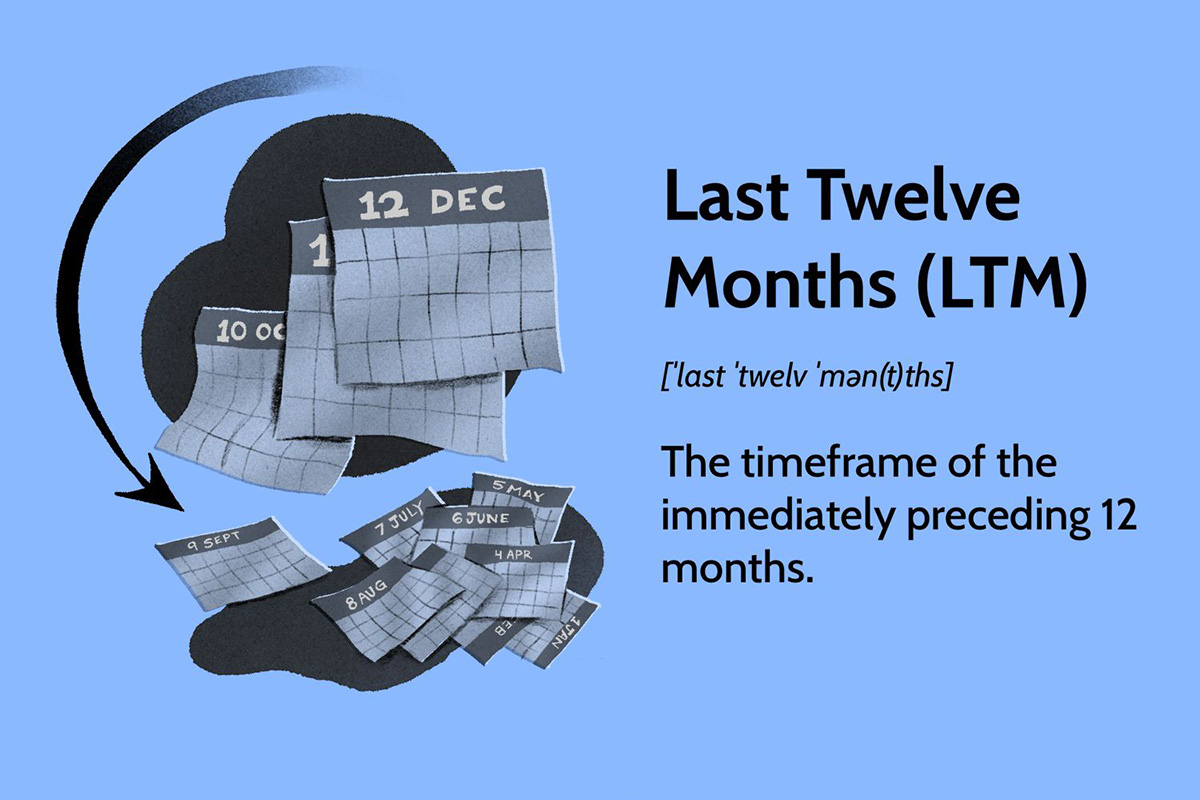

Finance
What Does Dso Stand For In Accounting
Published: October 9, 2023
Discover the meaning of DSO in accounting and how it relates to finance. Gain insights into financial management and optimize your business strategies.
(Many of the links in this article redirect to a specific reviewed product. Your purchase of these products through affiliate links helps to generate commission for LiveWell, at no extra cost. Learn more)
Table of Contents
Introduction
When it comes to accounting and financial management, there are several key metrics that businesses use to evaluate their performance and make informed decisions. One such metric is DSO, which stands for Days Sales Outstanding. DSO is a vital measurement that helps businesses understand the efficiency of their cash collection process.
DSO refers to the average number of days it takes for a company to collect payments from its customers after a sale has been made. It is a crucial metric for companies, as it directly impacts their cash flow and liquidity. A high DSO implies that it takes a longer time for the company to receive payments, which can lead to cash flow issues and delay in paying suppliers or investing in business growth. On the other hand, a low DSO indicates that the company has an efficient cash collection process and can generate cash quickly.
Closely monitoring and managing DSO is essential for businesses of all sizes, as it provides insights into the effectiveness of their credit policies, customer payment habits, and overall financial health. By analyzing DSO trends over time, companies can make informed decisions to improve their cash flow and optimize credit management.
In this article, we will delve deeper into the concept of DSO, explore its calculation, understand its importance in accounting, discuss the factors that impact DSO, highlight ways to improve DSO, and also address its limitations. By the end of this article, you will have a comprehensive understanding of DSO and its significance in financial management.
Definition of DSO
Days Sales Outstanding (DSO) is a financial metric that measures the average number of days it takes for a company to collect payments from its customers after a sale has been made. It is an important indicator of the efficiency of a company’s credit and collection processes.
DSO is calculated by taking the accounts receivable balance and dividing it by the average daily sales. The formula for calculating DSO is as follows:
DSO = (Accounts Receivable / Average Daily Sales)
The accounts receivable balance represents the total amount of money owed to the company by its customers for goods or services provided on credit. The average daily sales is calculated by taking the total sales for a given period and dividing it by the number of days in that period.
For example, if a company has an accounts receivable balance of $100,000 and average daily sales of $10,000, the DSO would be:
DSO = ($100,000 / $10,000) = 10 days
This means that on average, it takes the company 10 days to collect payments from its customers after a sale has been made.
DSO is typically reported in terms of the number of days. A lower DSO indicates that the company is able to collect payments more quickly, which is generally a positive sign as it indicates a healthy cash flow and effective credit management. On the other hand, a higher DSO suggests that the company takes a longer time to collect payments, potentially indicating issues with cash flow and credit management.
DSO is often used by businesses to evaluate their cash flow management, credit policies, and collection practices. By monitoring and analyzing DSO trends over time, companies can identify potential problems and take proactive measures to improve their cash flow and collection processes.
Calculation of DSO
The calculation of Days Sales Outstanding (DSO) involves determining the average number of days it takes for a company to collect payments from its customers. The calculation requires two pieces of data: the accounts receivable balance and the average daily sales.
To calculate DSO, you can follow these steps:
- Determine the accounts receivable balance: This refers to the total amount of money owed to the company by its customers for goods or services provided on credit. You can find this information on the company’s balance sheet or in the accounts receivable section of its financial statements.
- Calculate the average daily sales: This involves taking the total sales for a given period and dividing it by the number of days in that period. For example, if the total sales for a month amount to $100,000 and there are 30 days in that month, the average daily sales would be $3,333.
- Divide the accounts receivable balance by the average daily sales: Take the accounts receivable balance and divide it by the average daily sales. The result will be the DSO. For instance, if the accounts receivable balance is $50,000 and the average daily sales are $3,333, the DSO would be approximately 15 days.
It’s important to note that DSO is typically reported in terms of the number of days. The calculation gives insight into the average number of days it takes for the company to collect payments from its customers.
DSO can be calculated for different time periods, such as monthly, quarterly, or annually, depending on the company’s reporting needs and the availability of data. By tracking DSO over time, companies can identify trends and patterns that help them analyze their cash collection efficiency and make informed decisions to improve their financial performance.
It’s worth mentioning that DSO is just one of many financial metrics used in accounting and financial management. It provides valuable information about a company’s cash flow and credit management, allowing businesses to monitor and improve their collection processes and ensure a healthy financial position.
Importance of DSO in Accounting
Days Sales Outstanding (DSO) is a crucial metric in accounting that holds significant importance for businesses. It provides valuable insights into a company’s financial health, cash flow management, and credit policies. Here are some reasons why DSO is important in accounting:
- Cash flow management: DSO plays a vital role in managing a company’s cash flow. A low DSO indicates that the company is able to collect payments from customers quickly, resulting in improved cash flow. On the other hand, a high DSO suggests that the company takes a longer time to collect payments, potentially causing cash flow challenges. By closely monitoring and managing DSO, companies can optimize their cash flow, ensuring they have enough liquidity to meet their financial obligations.
- Efficient credit management: DSO helps businesses evaluate the effectiveness of their credit policies and collection practices. By analyzing DSO, companies can assess the average time it takes for customers to pay their invoices. This information enables companies to identify potential credit issues and take steps to mitigate risks, such as tightening credit terms, revising payment terms, or implementing stricter credit control measures.
- Identifying potential collection issues: DSO allows businesses to identify potential collection issues and take proactive measures. A sudden increase in DSO may indicate that customers are taking longer to pay, signaling potential financial distress or customer dissatisfaction. By closely monitoring DSO trends, companies can address collection issues promptly, negotiate payment terms, or engage in proactive communication with customers to ensure prompt payment.
- Assessing customer payment habits: DSO provides insights into customers’ payment habits and reliability. By calculating DSO for different customers, companies can segment their customer base and identify high-risk customers who consistently delay payments. This information helps companies make informed decisions about extending credit to customers, setting credit limits, or implementing stricter payment terms for high-risk customers.
- Financial analysis and decision-making: DSO is a key metric used by investors, lenders, and financial analysts in assessing a company’s financial performance and making investment decisions. A low DSO is often viewed as a positive indicator, suggesting efficient credit and collection processes, while a high DSO may raise concerns about the company’s cash flow management and potential collection challenges.
Overall, DSO is a critical metric that provides valuable insights into a company’s cash flow, credit management practices, and financial performance. By monitoring and analyzing DSO trends, companies can identify areas for improvement, optimize their cash flow, and make informed business decisions to enhance their financial stability and profitability.
Factors Impacting DSO
Days Sales Outstanding (DSO), as a measure of the average number of days it takes a company to collect payments from customers, can be influenced by various factors. Understanding these factors is crucial for businesses to effectively manage and optimize their DSO. Here are some key factors that impact DSO:
- Industry and Customer Base: The nature of the industry and the customer base can significantly impact DSO. Industries with longer payment terms, such as construction or manufacturing, tend to have higher DSO. Similarly, customers with inconsistent payment habits or those that rely heavily on credit may lead to increased DSO.
- Credit Policies and Terms: The credit policies and terms set by a company can directly impact DSO. Offering relaxed credit terms typically results in longer payment cycles and higher DSO. On the other hand, stricter credit policies, shorter payment terms, and incentives for early payments can help reduce DSO.
- Collection Processes: The effectiveness of a company’s collection processes can influence DSO. Companies with well-defined and efficient collection procedures are more likely to have lower DSO. Proactive communication with customers, setting up reminders, and implementing automated collection systems can help streamline the collection process and reduce DSO.
- Customer Relationship Management: The strength of the relationship between a company and its customers can impact DSO. Customers who have a good relationship with the company and appreciate the value provided are more likely to pay promptly. Building strong customer relationships, providing excellent customer service, and promptly addressing customer queries or concerns can contribute to faster payments and lower DSO.
- Economic Factors: Economic conditions can have an impact on DSO. During economic downturns or periods of financial instability, customers may face difficulties in making timely payments, leading to higher DSO. Conversely, during periods of economic growth, customers may have better cash flow and be more prompt in paying, resulting in lower DSO.
- Invoice Accuracy and Clarity: Errors or discrepancies in invoices can lead to delays in payment and higher DSO. Ensuring accuracy and clarity in invoicing, including providing detailed information about the products or services, payment terms, and due dates, can help minimize payment delays and reduce DSO.
It’s important for businesses to regularly assess and analyze these factors to identify areas for improvement and implement strategies to optimize their DSO. By addressing these factors, companies can enhance their cash flow, strengthen customer relationships, and improve overall financial performance.
Ways to Improve DSO
Reducing Days Sales Outstanding (DSO) is a key goal for businesses as it improves cash flow and enhances financial stability. While DSO can be influenced by various factors, there are several effective strategies companies can implement to improve their DSO. Here are some ways to reduce DSO:
- Streamline Invoicing Process: One of the primary reasons for payment delays is the complexity or inefficiency in the invoicing process. Simplifying and automating invoicing procedures can help ensure accurate and timely issuance of invoices, reducing the risk of errors and delays in payment.
- Set Clear Credit Policies: Establishing clear and well-defined credit policies can help manage customer expectations and ensure prompt payments. Clearly communicate payment terms, credit limits, and penalties for late payments upfront to encourage timely settlement of invoices.
- Offer Incentives for Early Payments: Providing incentives, such as discounts or small rewards, for customers who pay within a specified period can motivate them to settle their invoices promptly and reduce DSO.
- Implement Robust Collection Processes: Developing efficient collection processes is crucial for DSO reduction. Regularly follow up with customers regarding outstanding payments, establish a process for reminders, and utilize technology solutions, such as automated reminders or payment portals, to streamline collection efforts.
- Establish Strong Customer Relationships: Building strong relationships with customers can foster trust and prompt payment. Regularly communicate with customers, address their concerns promptly, and provide excellent customer service to cultivate a positive payment culture.
- Conduct Credit Risk Assessments: Before extending credit to a new customer, perform thorough credit risk assessments. Evaluate their creditworthiness, payment history, and financial stability to minimize the risk of late payments or defaults.
- Offer Multiple Payment Options: Providing customers with various payment methods, such as credit cards, online transfers, or electronic funds transfers, can make it easier for them to settle payments promptly, reducing delays associated with traditional payment methods.
- Implement Credit Monitoring and Collection Tools: Utilize credit monitoring tools and software that can help track and analyze customer payment habits, predict payment delays, and streamline collection efforts.
- Negotiate Payment Terms: Engage in open and transparent discussions with customers regarding payment terms. In some cases, offering flexible payment options or negotiating payment plans can reduce payment delays and improve cash flow.
It’s important to note that improving DSO requires a holistic approach and consistent monitoring. Regularly assess the effectiveness of implemented strategies and make adjustments if necessary. By implementing these strategies, businesses can optimize their DSO, enhance cash flow, and strengthen their overall financial position.
Limitations of DSO
While Days Sales Outstanding (DSO) is a valuable metric in evaluating a company’s cash flow and credit management, it is important to acknowledge its limitations and consider other factors when assessing financial health. Here are some limitations to keep in mind when using DSO:
- Variability in Industry Norms: DSO benchmarks can vary significantly across industries. Comparing DSO figures without considering industry-specific norms may not provide an accurate picture of a company’s performance. It is crucial to understand the industry and consider the average DSO for meaningful comparisons.
- Seasonal and Cyclical Factors: DSO can be influenced by seasonal or cyclical patterns in sales and customer payment behaviors. Changes in these patterns can affect DSO, making it necessary to consider these fluctuations over time for a more accurate evaluation of a company’s cash flow performance.
- Payment Terms and Discounts: Companies with longer payment terms, such as those offered to high-value clients or for complex projects, may have higher DSO even with efficient credit management. Additionally, discounts offered for early payments can impact DSO figures and distort the true picture of cash flow efficiency.
- Different Business Models: DSO may not provide a comprehensive view of a company’s financial health if it operates under a subscription-based or recurring revenue model, where payments are spread over an extended period. In such cases, complementing DSO with other metrics like Monthly Recurring Revenue (MRR) or Annual Recurring Revenue (ARR) can provide a more accurate assessment of financial performance.
- Financial Reporting Practices: DSO calculations rely on accurate and up-to-date accounts receivable data. Inaccurate or delayed reporting can impact the accuracy of DSO figures and limit its effectiveness as an assessment tool. Ensuring robust reporting practices and timely updates to accounts receivable balances is imperative.
- Customer Payment Behavior: DSO calculations are based on average payment behavior and do not account for individual customer payment habits. Late-paying customers or a small number of customers with significantly delayed payments can skew the overall DSO figure. Analyzing individual customer payment patterns and addressing outliers is crucial for a more accurate assessment.
While DSO provides valuable insights into cash flow management and credit efficiency, it is essential to consider these limitations and supplement the evaluation with other financial metrics and contextual factors. Combining DSO with metrics like customer creditworthiness, aging analysis, and customer satisfaction levels can provide a holistic view of a company’s financial health and inform appropriate decision-making.
Conclusion
Days Sales Outstanding (DSO) is a significant metric in accounting that measures the average number of days it takes for a company to collect payments from customers. It plays a crucial role in assessing a company’s cash flow management, credit policies, and collection practices.
By monitoring and analyzing DSO, businesses can gain insights into their financial health, identify potential issues with cash flow and credit management, and make informed decisions to improve their overall financial performance.
Calculation of DSO involves dividing the accounts receivable balance by the average daily sales. This formula provides a measure of the average time it takes for a company to collect payments.
DSO is essential for effective cash flow management, as it helps businesses optimize their collection processes, set clear credit policies, and establish stronger customer relationships. It also aids in assessing customer payment habits and determining creditworthiness.
However, it’s important to recognize the limitations of DSO. Factors such as industry norms, seasonal patterns, payment terms, and individual customer behavior can impact DSO figures. Therefore, it is crucial to complement DSO with other financial metrics and contextual factors for a comprehensive assessment of a company’s financial health.
In conclusion, DSO is a vital metric for businesses to monitor and manage their cash flow, credit management, and financial stability. By implementing strategies to reduce DSO, such as streamlining invoicing processes, improving collection procedures, and establishing strong customer relationships, businesses can optimize their cash flow, enhance financial performance, and ensure long-term success.














